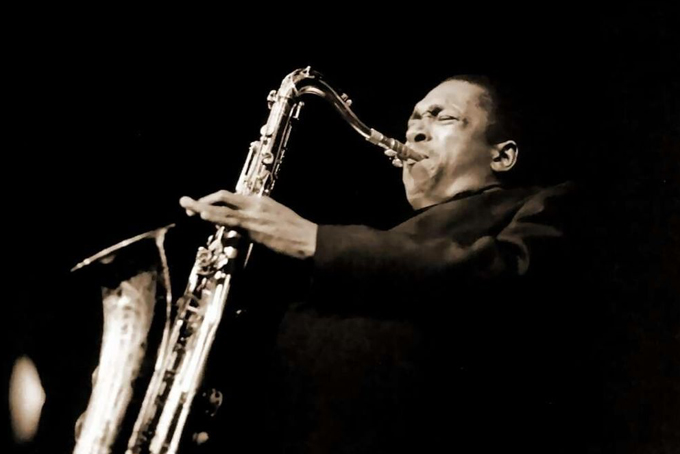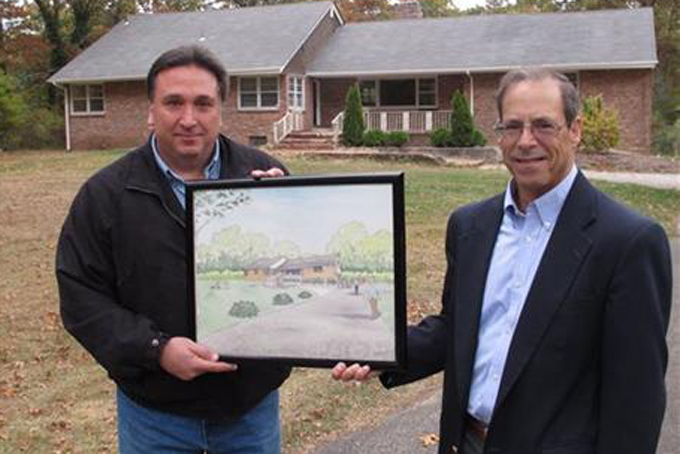
by Frank Eltman
Associated Press Writer
DIX HILLS, N.Y. (AP) — In a quiet, tree-lined suburb of New York City sits an unassuming brick ranch house that many musicians consider hallowed ground.
This is where saxophonist John Coltrane composed the epic 1964 jazz masterpiece “A Love Supreme,” shortly after moving into the Dix Hills, Long Island, home. Although he only lived there three years — Coltrane died of cancer in 1967 at age 40 — musicians including Carlos Santana and Coltrane’s son Ravi are among those backing a volunteer effort to turn the dilapidated, four-bedroom house into a museum and learning center.

In this Oct. 23 photo, Steve Fulgoni, left, and Ron Stein, two of the organizers of an effort to restore a home of jazz legend John Coltrane, hold an artist’s rendering of the the Dix Hills, N.Y. site after restoration. (AP Photo/Frank Eltman)
“The Coltrane Home is a beacon to anyone interested in jazz history, cultural history, African-American history, New York history and American history,” Santana said in a statement promoting a Manhattan fundraiser where he helped raise $30,000. The guitar virtuoso has been a Coltrane fan for decades; he released a 1973 album with fellow guitarist John McLaughlin called “Love Devotion Surrender” as a Coltrane tribute.”
This 1964 file photo shows jazz saxophonist John Coltrane. The year 2014 will mark the 50th anniversary of Coltrane’s completion of “A Love Supreme.” He died of cancer in 1967 at age 40. (AP Photo)
The move to restore the home began about a decade ago when local jazz enthusiast Steve Fulgoni learned a developer had purchased the 3.5-acre property with plans to demolish the home and build three smaller houses. He organized a lobbying effort to save the home, and eventually Huntington town officials purchased the property from the developer for $975,000 and designated it as a town park.
But town officials told Fulgoni and his supporters — which by then included members of the Coltrane family — that any effort to create a museum would have to be privately funded.
Years of neglect left the home infested with mold and in dire condition, Fulgoni said. However, much of the interior was essentially unchanged from when the Coltranes lived there in the 1960s.
Ron Stein, chief operating officer of Friends of the John Coltrane Home, said that before last month’s event, the organization had raised about $120,000, which includes $35,000 in grants from the 1772 Foundation and the National Trust for Historic Preservation. There also has been about $200,000 of “in kind” donations from architects, electrical contractors, general contractors, mold remediation and other services.
Stein and others say their goal is to raise about $1.5 million. The 50th anniversary of Coltrane’s completion of “A Love Supreme” in 2014 has organizers dreaming of opening the house to visitors next year, but Stein conceded that may not be a realistic goal.
He said the support from Santana, Ravi Coltrane and professor and author Cornel West at last month’s fundraiser helped spark increased awareness for the project.
“What we need to do is seize the momentum from this recent event and get enough people to realize the importance of this investment, the urgency of making this investment,” Stein said. “People here and abroad need to understand the real importance of the Coltranes’ legacy.”